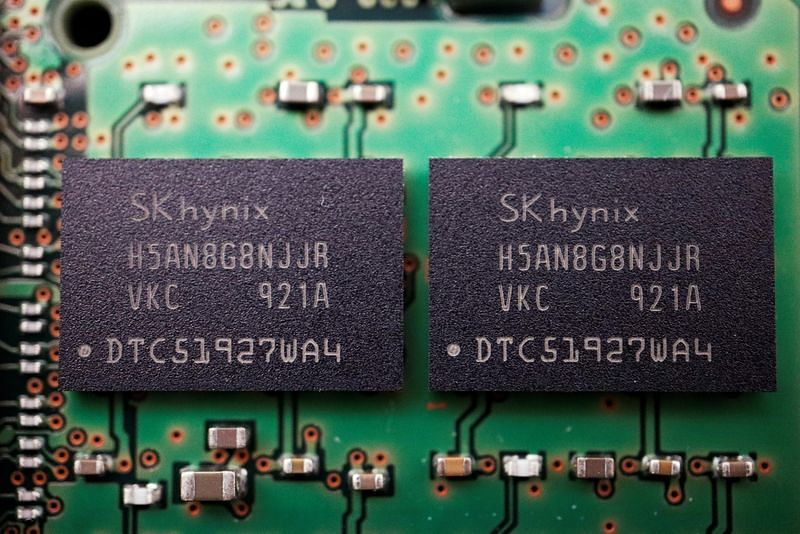By Joyce Lee and Heekyong Yang
SEOUL (Reuters) -South Korea’s SK Hynix Inc cautioned that the chip industry downturn, the worst in over a decade, will deepen further in the next few months as it posted a record quarterly operating loss on Wednesday.
Market conditions will gradually improve later this year as chipmakers cut supply in response to the drop in global tech demand and clients buy chips again at low prices, said SK Hynix, the world’s No.2 memory chipmaker after Samsung Electronics.
“The recent drop in memory prices is the largest since the fourth quarter of 2008 … industry-wide inventory is probably at an all-time high,” SK Hynix’s finance chief, Woohyun Kim, said in an earnings call.
He expects inventory levels to peak during the first quarter before gradually declining as chipmakers reduce production, improving supply-and-demand conditions in the second half.
SK Hynix flagged lower chip prices in the current quarter.
Shares of the company rose as much as 5% on hopes of a recovery later in 2023, but faced with a bleak near-term outlook, the gains fizzled out. The stock was up 0.8% at 0345 GMT, in line with the wider benchmark’s 0.8% rise.
For the fourth quarter ended December, SK Hynix swung to a worse-than-expected 1.7 trillion won ($1.38 billion) operating loss, from 4.2 trillion won profit a year earlier. The quarterly loss is the biggest since SK Group acquired Hynix in 2012.
Analysts had expected a 1.3 trillion won operating loss, according to Refinitiv SmartEstimate.
‘PRODUCTION ADJUSTMENTS NEEDED’
The global technology industry has been battling a sharp and sudden downturn in demand since late 2022, as companies cut spending on tech products and services while consumers spend less on discretionary goods amid surging inflation.
To offload piling inventory, chipmakers looked to sell chips at modest prices in the fourth quarter, leading to a depreciation in the asset value of NAND Flash chip inventory.
But selling has not been easy with clients, wary due to economic uncertainty, opting to use their own inventory, analysts said.
Data as of the fourth quarter shows it took 46.1 weeks for SK Hynix’s products to be sold from time of production, said Nam Dae-jong, analyst at eBest Investment & Securities.
Although this is expected to drop to 39.9 weeks in the first quarter, “it’s still too much… active production adjustments are needed”, Nam said. It was below 10 weeks a year earlier.
SK Hynix said in October it plans to slash its 2023 investment by more than half versus 2022, after warning of an “unprecedented deterioration” in memory chip demand.
On its earnings call, SK Hynix said it will focus its resources on advanced chips to prepare for a market upturn in 2024. It had a free cash flow deficit of 4.23 trillion won as of end-2022.
In contrast, Samsung Electronics has said it has no plans to cut investment despite reporting a 97% plunge in its chip operating profit for the October-December period.
“Hynix doesn’t have as much money as Samsung. Its free cash flow is at a big deficit, and… borrowing has increased,” said Eo Kyu-jin, analyst at DB Financial Investment. “It’s a necessary choice to cut capex.”
($1 = 1,232.4700 won)
(Reporting by Joyce Lee and Heekyong Yang; Editing by Lincoln Feast and Himani Sarkar)
Disclaimer: This report is auto generated from the Reuters news service. ThePrint holds no responsibilty for its content.
